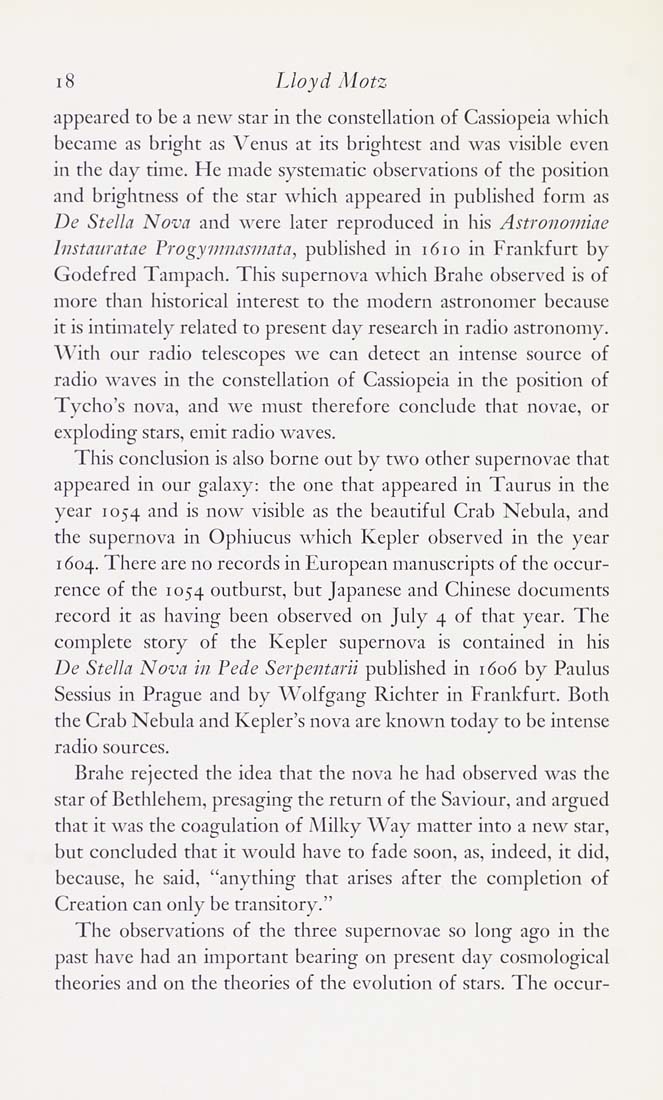Columbia Library columns (v.9(1959Nov-1960May))
(New York : Friends of the Columbia Libraries. )
|
||
|
|
|
|
| v.9,no.1(1959:Nov): Page 18 |

18 Lloyd Motz appeared to be a new star in the constellation of Cassiopeia which became as bright as Venus at its brightest and was visible even in the day time. He made systematic observations of the po.sition and brightness of the star which appeared in published form as De Stella Nova and were later reproduced in his Astronomiae Instauratae Frogymnasmata, published in i6io in Frankfurt by Godefred Tampach. This supernova which Brahe observed is of more than historical interest to the modern astronomer because it is intimately related to present day research in radio astronomy. With our radio telescopes we can detect an intense source of radio waves in the constellation of Cassiopeia in the position of Tycho's nova, and we must therefore conclude that novae, or exploding stars, emit radio waves. This conclusion is also borne out by two other supernovae that appeared in our galaxy: the one that appeared in Taurus in the year 1054 and is now visible as the beautiful Crab Nebula, and the supernova in Ophiucus -which Kepler observed in the year 1604. There are no records in European manuscripts of the occur¬ rence of the 1054 outburst, but Japanese and Chinese documents record it as having been observed on July 4 of that year. The complete story of the Kepler supernova is contained in his De Stella Nova in Pede Serpentarii published in 1606 by Paulus Sessius in Prague and by Wolfgang Richter in Frankfurt. Both the Crab Nebula and Kepler's nova are known today to be intense radio sources. Brahe rejected the idea that the nova he had observed was the star of Bethlehem, presaging the return of the Saviour, and argued that it was the coagulation of Milky Way matter into a new star, but concluded that it would have to fade soon, as, indeed, it did, because, he said, "anything that arises after the completion of Creation can only be transitory." The observations of the three supernovae so long ago in the past have had an important bearing on present day cosmological theories and on the theories of the evolution of stars. The occur- |
| v.9,no.1(1959:Nov): Page 18 |







